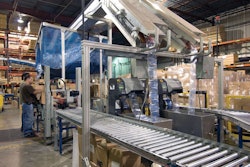
Think again. In a global economy, you need all the help you can get to stay ahead of the competition. We’ve all heard that 80 to 85% of new products fail, so it should be pretty obvious that new and improved methods are needed to enhance our success rate.
How are leading organizations like Procter & Gamble and Kraft improving the odds? Both organizations have created new innovation models. At P&G it’s called “Connect and Develop,” and at Kraft it’s “Innovate with Kraft.” In both cases, the goal is collaboration with outside entities. Neither organization has lost focus on consumer behavior. And both firms continue to emphasize a holistic product-development plan and brand strategy linking all consumer connection points—even packaging. What’s new is that now, on top of these bedrock principles of innovation, both firms have come to embrace a philosophy known as Open Innovation.
Open Innovation has been around since the 1980s. Initiatives started at the Xerox Palo Alto Research Center, with leadership provided by Henry Chesbrough. Chesbrough went on to popularize the concept in 2003 in his book Open Business Models—How to Thrive in the New Innovation Landscape. Simply put, Open Innovation is a means to develop new growth opportunities by leveraging knowledge and tapping into technologies from external resources.
It all sounds simple enough, but extracting value from Open Innovation requires strategic thinking, long-range planning, and alignment with existing innovation platforms. Focusing on platforms as opposed to individual projects permits repeatability across product lines, improves speed to market, and increases your chance of success. The innovation rules are changing as organizations look for partnerships, collaborations, and the development of new relationships to create new consumer-centric solutions leveraging tools like Open Innovation.
One possible barrier keeping an organization from embracing Open Innovation is that the very idea of being “open” about business practices or strategic initiatives runs counter to traditional wisdom, especially when there are concerns about intellectual property (IP) rights. But if progressive firms like P&G, whose goal is to obtain 50% of its innovations from outside the company, are scoring successes by being more open, perhaps your firm should give it a try, too. Keep in mind that P&G’s success rate for new-product introductions is higher than 50%. They must be doing something right.

























